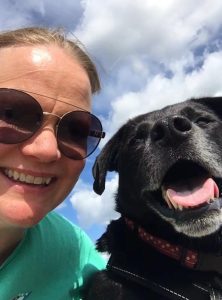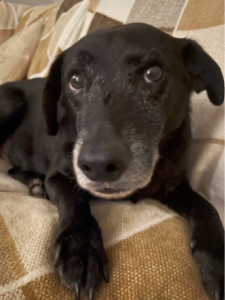 This week, we turn our focus to Dr Katherine Stanbury, who manages our inherited eye disease programme, CRIEDD (Consortium to Research Inherited Eye Disease in Dogs). The CRIEDD project was established in 2019 with funding from Dogs Trust, and Katherine joined the group that same year. “It was serendipitous that I took on this role,” Katherine said. “I re-homed my dog Wyatt from Dogs Trust a few years before.”
This week, we turn our focus to Dr Katherine Stanbury, who manages our inherited eye disease programme, CRIEDD (Consortium to Research Inherited Eye Disease in Dogs). The CRIEDD project was established in 2019 with funding from Dogs Trust, and Katherine joined the group that same year. “It was serendipitous that I took on this role,” Katherine said. “I re-homed my dog Wyatt from Dogs Trust a few years before.”
 We sat down with Katherine to chat about her role in the Canine Genetics Centre and what aspects of the job she loves most.
We sat down with Katherine to chat about her role in the Canine Genetics Centre and what aspects of the job she loves most.
“I absolutely love my job; to me, it’s a huge privilege. Being able to improve the health and welfare of so many dogs through our research is extremely rewarding. When I joined the CRIEDD project I was new to canine genetics – my PhD focused on the conservation genetics of an endangered primate. However, the skills that I developed were not species-specific, so I could apply them in my new role. That said, I had to familiarise myself with many dog breeds I hadn’t known before! What I love most about this job is its diversity – I split my time between the lab and the office, working to identify genetic variants that cause inherited eye disease.”
 Although the CRIEDD project began in 2019, the Canine Genetics Centre has a long history of working on canine inherited eye disease, starting when Dr. Cathryn Mellersh established the group at the Animal Health Trust. To date, the group has identified 23 causal variants and is continuing its efforts to find more!
Although the CRIEDD project began in 2019, the Canine Genetics Centre has a long history of working on canine inherited eye disease, starting when Dr. Cathryn Mellersh established the group at the Animal Health Trust. To date, the group has identified 23 causal variants and is continuing its efforts to find more!
“The first task I took on was to create a mutation panel capable of simultaneously screening large numbers of dogs for all known variants. This enables me to identify whether a variant is present in a breed not previously associated with that particular mutation or, if a dog is clear of all panel mutations, to determine whether a novel variant is causing the disease. It is incredibly gratifying to discover such variants and create DNA tests that can prevent future generations of dogs from suffering. None of this would be possible, however, without the help of the amazing veterinary ophthalmologists we frequently collaborate with and, of course, the dog owners and breeders who generously provide DNA samples from their affected dogs.”

